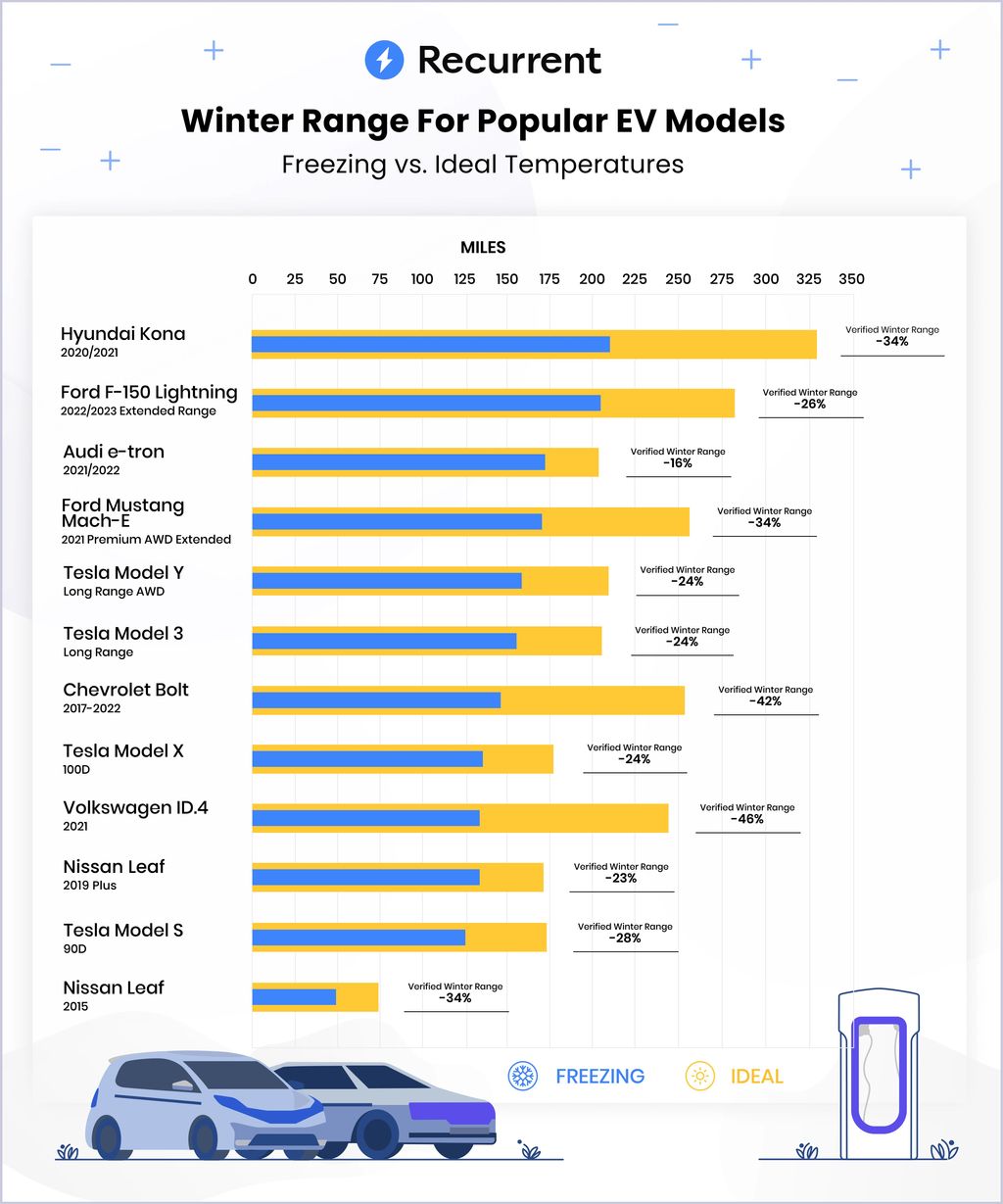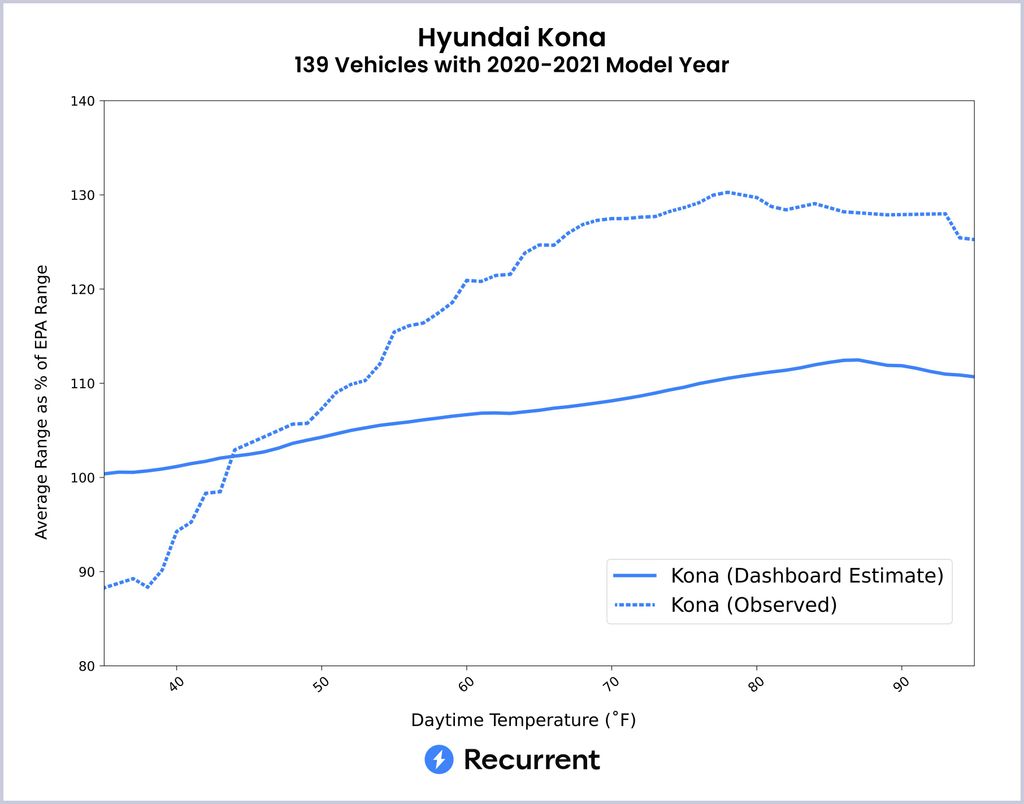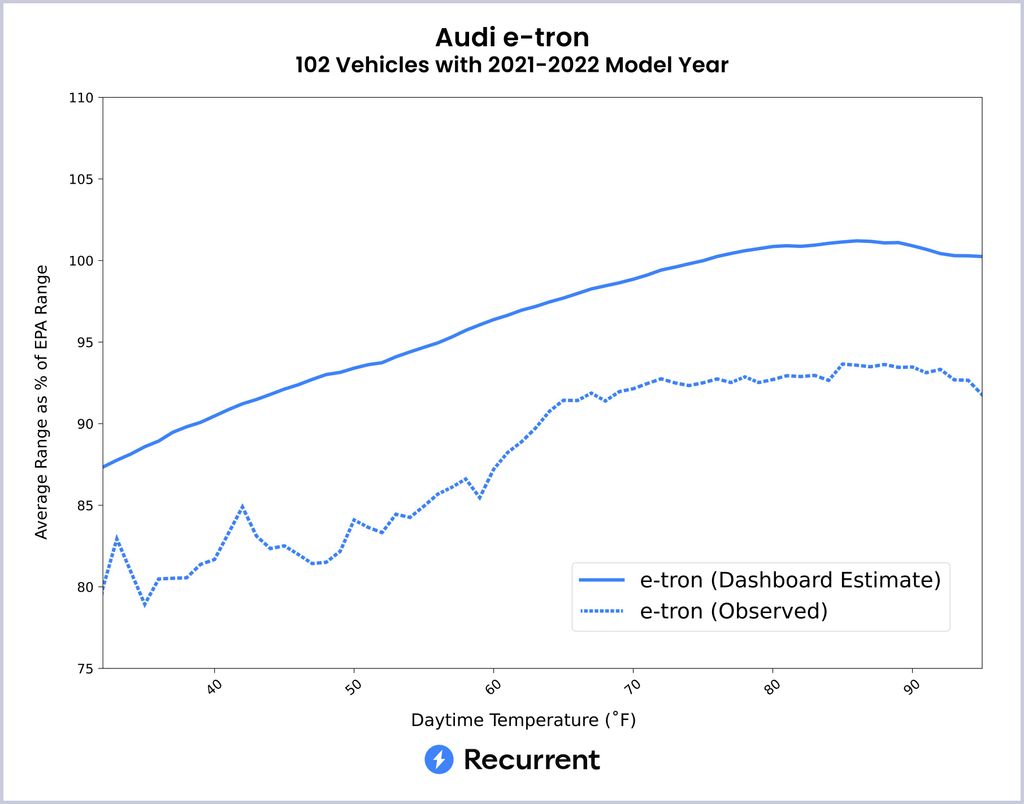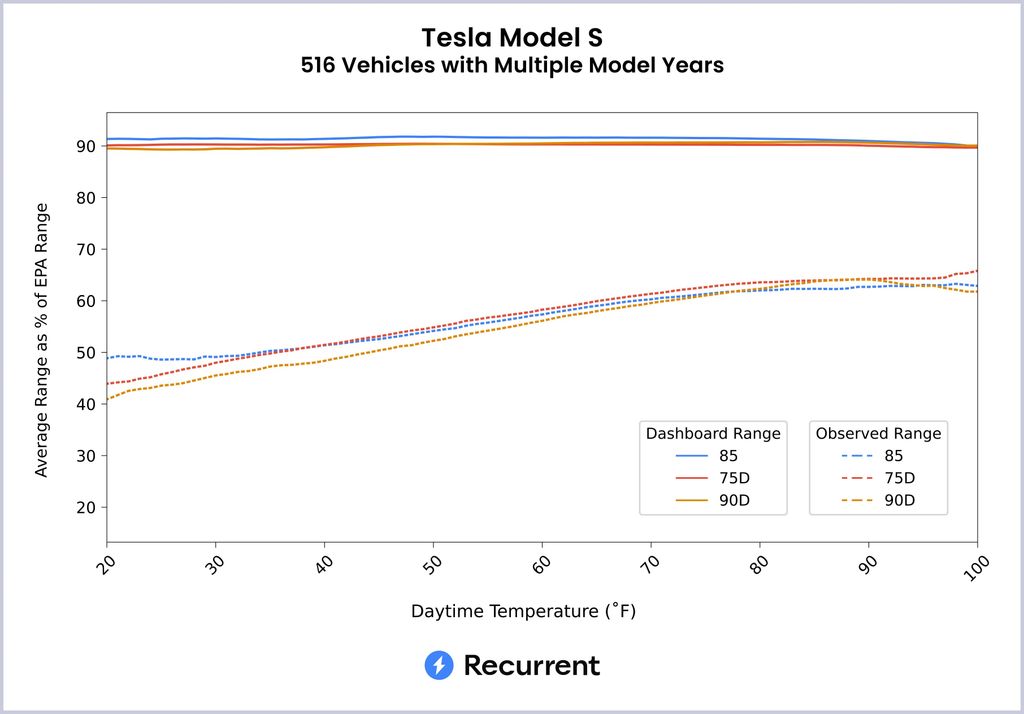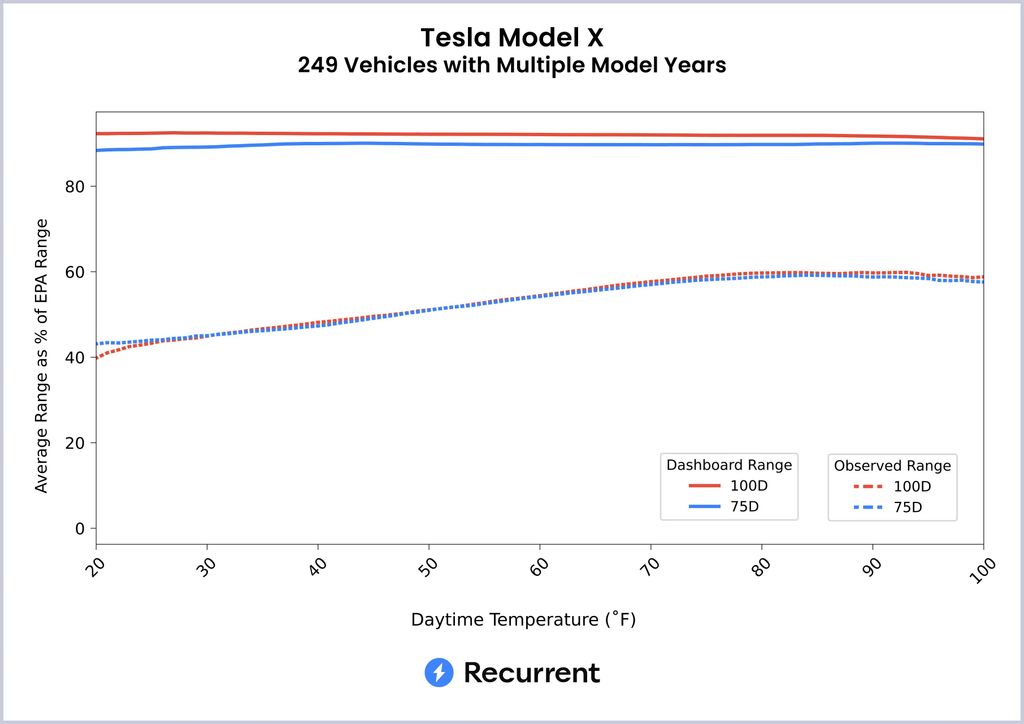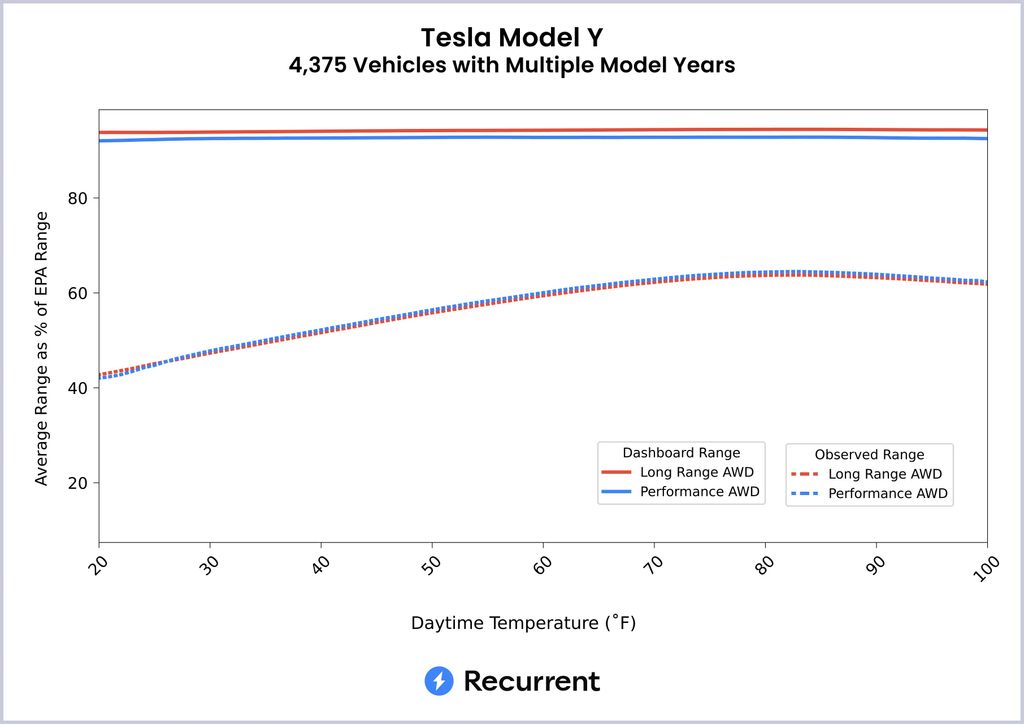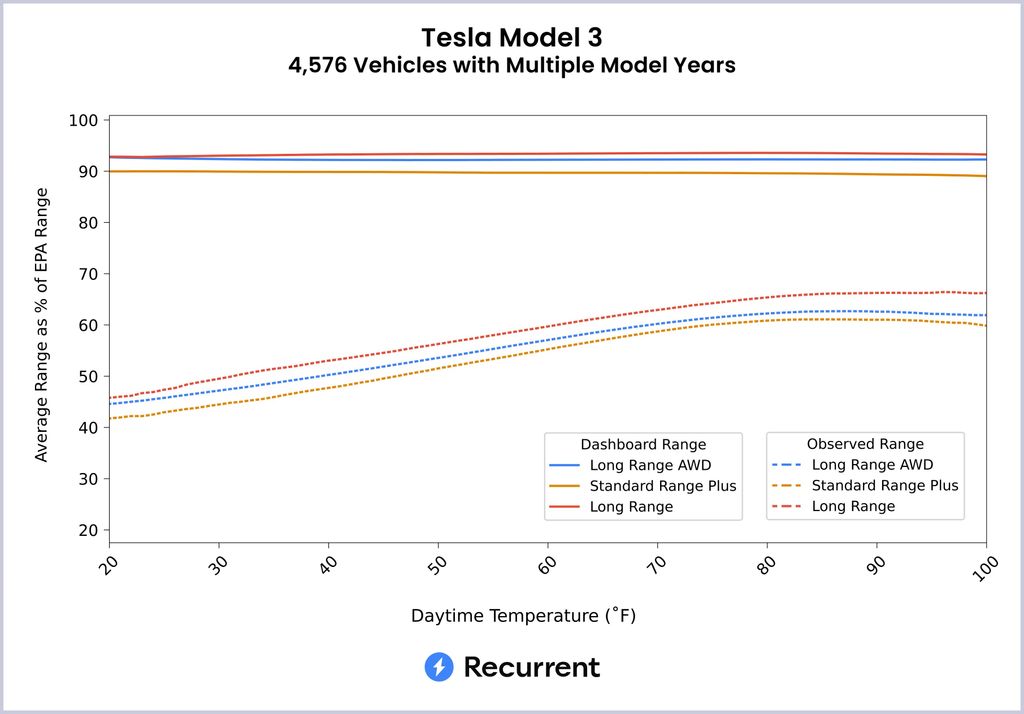Electric cars don’t play nice in freezing temperatures. That’s because the battery’s chemistry is affected by the lower temperatures, whereas ideal conditions allow the energy to flow more freely.
But not all EVs are created equal, as is the case with just about everything in this world of ours. Some battery-powered cars offer up to 80% of their original EPA range when the thermometer drops to 32F, while others can conk out after traveling for half the advertised EPA range.
Get Fully Charged
Real-world driving data sheds light on winter range loss
Data from Recurrent Auto shows that EVs lose about 30% of their range on average when driving at 32 degrees Fahrenheit compared to ideal conditions. The drops are bigger when compared to the original EPA figure.
Thanks to new data from Recurrent Auto, which analyzed over 10,000 EVs in the United States using its onboard diagnostics dongle, we can get a pretty good idea of what to expect in the winter from some of the most popular EVs on U.S. roads.
Recurrent’s main chart, embedded below, shows range loss in freezing temperatures for 12 popular battery-powered cars in the U.S. as compared to the range in the ideal driving temperature. In other words, the higher range figure shown in yellow is not the official EPA rating (more on this further down in the article). Instead, it’s the highest average driving range that was observed by the Recurrent community of drivers at the ideal temperature for each specific model.
In this type of comparison, the Volkswagen ID.4 saw a 46% drop in its winter range, which is about 130 miles on a full charge. On the other end of the spectrum is the Audi e-tron which lost just 16% of its driving miles in 32F compared to the highest average observed range in ideal temperatures.
The Tesla Model Y, Model 3, and Model X had a 24% decrease, while the Model S was a bit worse at 28% less winter range. Again, these percentages are relative to the observed driving ranges in ideal conditions and not to the official EPA figures–those are worse, as you’ll see below.
It’s worth noting that the verified winter range figures include all real-world variables, such as uneven terrain, variable driving speeds and uses, as well as battery aging, Recurrent claims.
But what about the observed real-world driving range compared to the official EPA figure? Well, the differences are a bit more dramatic, as some EVs have a hard time reaching their advertised range figures in ideal conditions, too, not just in cold weather. At the same time, other electric cars exceed their EPA ranges in real-world conditions.
The 2016-2017 Volkswagen e-Golf is the best at offering the most miles in the winter when compared to the advertised range, according to Recurrent Auto’s research, retaining 88% of its original EPA range at 32F. When driving in ideal conditions, the e-Golf is capable of offering 111% of its advertised range, so more than what the windows sticker says. Some e-Golf trims came with a heat pump.
The 2022-2021 Hyundai Kona electric is next on the list of 18 models included by Recurrent in its detailed analysis of cars that have available data for observed range (some models in there use the range estimate that’s shown on the dashboard, but we excluded those from this piece).
According to the company behind this data, the Korean crossover retained 84% of its original EPA range when driving at an ambient temperature of 32F without a heat pump, while the observed maximum range was 130% of the EPA figure.
The 2021-2022 Audi e-tron is third on the list with the German crossover retaining 80% of its original EPA range when driving in freezing conditions. The 2021-2022 e-tron came with a heat pump as standard, while the 2023 model does without one.
The 2017-2022 Chevrolet Bolt EV lost 32% of its EPA range when driving in the winter, the 2021 Ford Mustang Mach-E and 2022-2023 F-150 Lightning saw their winter ranges drop by 36%, while the aging 2015 Nissan Leaf was hit with a 42% decrease. The 2021 Volkswagen ID.4 was capable of driving 65% of its original EPA range in the winter.
None of these models came with a heat pump. They rely on a resistive heater to provide warm air to the cabin, which is less energy efficient.
As for Tesla, the gaps between the advertised range and the observed winter range are the biggest on Recurrent’s list. That’s because the American EV maker has a pretty hard time matching its EPA range in ideal conditions, too, not just in cold weather, and is known for “gaming” the on-board range estimates seen by the drivers on the cars’ screens.
Heck, a Reuters investigation even pointed out that Tesla had a special team of people who were tasked with suppressing thousands of driving range complaints from its customers. Furthermore, as Recurrent points out, Tesla’s EVs have a very robust and aggressive thermal management system for the high-voltage battery that kicks in at both high and low temperatures to protect the pack in the long term, but because of this, the range estimate shown on the screen can fluctuate.
As per the study, the Tesla Model S lost 55% of its original EPA range when driving in 32F. The Model X and Model Y were a bit better with a 52% reduction for each, while the Model 3 was the most efficient but still lost 50% of its advertised range when driving in the winter.
So take that as you may. As you can see, all EVs are affected by freezing temperatures, but some are better than others at preserving more of their official EPA figures. That can play a big role in toning down range anxiety, but at the end of the day, it’s all about knowing your car. If you know you have to recharge once every 100 miles instead of stopping every 200 miles, you’re good. But that’s like knowing you’re being cheated on and accepting it anyway.

